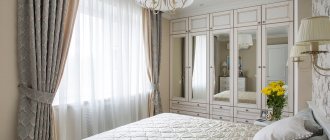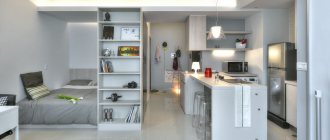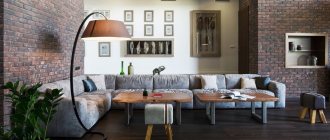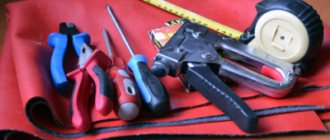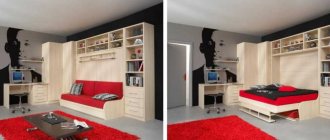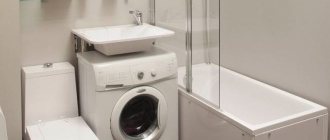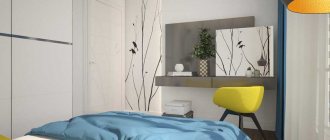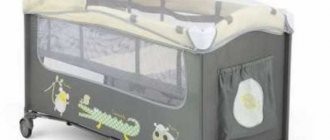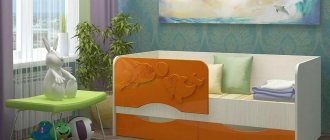Variations of structural elements
Since the greatest load falls on the legs and base of the furniture, more stringent requirements are imposed on them. The basic elements of a crib include the frame, lamellas (slats inserted into the bottom of the frame), sides (sideboards for the safety of children) and legs - all of them are necessarily present in models of any design. Possible additional elements:
- folding or extendable tables;
- boxes;
- shelves;
- built-in wardrobes:
- sports equipment;
- stairs;
- decorative details.
Base
The frame is made in the form of a frame made of wood or metal, to which the base is attached. It is this detail that makes the bed quite comfortable and reliable. There are several options:
- Solid base. It is made from a single sheet of plywood. This design is suitable for the youngest children. However, over time it is pressed through, and depressions may appear. Most often, this option is purchased for a classic spring mattress.
- Lattice with lamellas. The slats are needed to support the mattress; they are placed at a distance of approximately 5 cm from each other. This provides an orthopedic effect and allows air to circulate freely.
How to make a children's bed with your own hands, step-by-step instructions
The slats in modern beds are made from slats slightly curved upward. They distribute the load evenly and do not sag. When paired with a good orthopedic mattress, these elements provide reliable support for the spine. The strength of the base depends on the number of slats.
The optimal option is when the distance between the slats is equal to the width of one slats.
Solid base
Lattice with lamellas
Headboard
The headboard, along with the sides, should limit the sleeping area, ensuring safety. As a rule, it is made higher than the footboard. But it all depends on the design idea. There are high and low headboards and footboards, solid and with gaps.
These elements also differ in rigidity. For the little ones, choose a soft back or attach special sides so that the child does not get injured. For older children, any headboard is suitable, into which various shelves and drawers for books and toys are built. If your child likes to spend time sitting on the bed, then it is better to choose a high backrest. It is important that the upholstery material is wear-resistant and hypoallergenic.
The appearance, height and configuration of the backrest depend only on the design style of the bed.
Low, solid headboard
High, soft
Hard, with gaps
With drawers and shelves
Storage systems
Storage systems in children's corner beds include:
- shelves;
- lockers;
- drawers, boxes or niches.
Shelves can be located along a long or short wall. Sometimes the end wall is made in the form of an open shelving. This is a convenient place to store toys, books, and necessary little things. Open shelves are suitable for children of middle and high school age. This design is unsafe for children - a child can knock over the things displayed there. The same applies to open built-in niches.
A closed wardrobe built into the bed frame is convenient because it allows you to keep your sleeping area clean. It is safe for children of any age.
There are two types of boxes:
- on guides;
- on rollerskates.
If you plan to use them only for storing things, then you can choose models with guide bars. However, it will be easier for your child to pull them out if they are equipped with wheels. In the case where the bottom drawer serves as a sleeping place, it must be equipped with casters to provide reliable support during sleep.
There are also options when there are spacious niches under the base of the bed.
Materials
The headboard and backrest are often made soft, curly, this adds decorativeness to the design. The most functional is upholstery made of genuine leather, velor or jacquard. Flock and eco-leather look great, are characterized by affordable prices, but are less resistant to wear and tear under regular use.
The frame is usually made in the same style as the headboard. Popular raw materials are:
- Wood and veneer are excellent materials for making backs and frames. The models are presentable, environmentally friendly, functional and durable. They look great in the bedroom and are easy to care for.
- MDF - allows you to produce original, bright designs. The backs and frame made of it, complemented by a high-quality base, make it possible to create a durable, beautiful model. The coating can be glossy or matte, plain or with a pattern, depending on the wishes of the customer. This option is especially relevant for children's rooms. Modern design and an abundance of bright colors allow them to fit organically into the interior.
- Chipboard is the most budget option, from which you should not expect durability. However, such beds are great for small apartments because they save space. In addition, they are often purchased by young couples for rented housing.
Advantages of solid wood beds, popular models and designs
A chipboard design can be chosen for a calm, slightly older child. There is no point in purchasing an expensive model, since the furniture will soon have to be replaced.
Tree
MDF
Chipboard
Varieties of configuration
Designers design corner furniture for children in the form of houses, cars, toys, and spaceships. The bed is no longer just a place to sleep. Here a child can play, play sports, read, store toys, or simply make a cozy “house” of pillows.
Color combinations allow you to visually separate storage spaces, a sports corner, a sleeping area, and a work table. Double products for girls and boys are painted in different colors and decorated accordingly. These can be bunk structures or beds on the same level, connected at an angle.
Traditional with drawer
The classic corner bed is complemented by one or more drawers. As a rule, these are retractable elements located under the berth. Such designs successfully replace a chest of drawers; they store bed linen, towels, pillows, pajamas and other things.
Depending on the configuration, boxes come in two types:
- on guides (slide along slats mounted on the sides of the structure);
- on wheels.
There are models with one large drawer. If it is equipped with a wheel, then, if necessary, it can serve as an additional sleeping place. Options with two or three separate drawers are more convenient to use. They make it easier to maintain order and find the things you need. The approach to the beds can be from the side or from the end. Both options have their advantages; the choice depends on the arrangement of furniture and the preferences of the child or parents.
The traditional corner bed is suitable for children aged 3-4 years.
Attic
This is a multifunctional design, similar to a regular bed with very high legs, under which there is a workplace. The attic must have a reliable ladder and strong sides. As a rule, it is designed for one child, but there are options in which the upper tier is equipped with two beds at once.
The main advantage is versatility. The bed simultaneously serves as a place to store things, toys, books and a work or gaming table. There is only one minus - it is advisable to use the model in a room with a high ceiling. In a room that is too low, it will be inconvenient for a child to climb onto the second tier and uncomfortable to sleep: it is usually very stuffy under the ceiling.
Suitable for children aged 3–5 years, if they are not afraid to climb to the upper tier on their own. Can be used up to 15–18 years.
Non-standard shape
From a practical point of view, a non-standard bed may be needed if conventional models for some reason do not fit into the corner allocated for them. But parents care about practicality, and children care more about the appearance of the furniture. Most often, such products are chosen for arranging a nursery, trying to make it as comfortable as possible and decorate it with fun elements. Here are just a few unusual designs that are suitable for children over 2 years old:
- Corner bed "house". An imitation of a real roof is installed above the sleeping place, the wall is decorated with windows, and small light bulbs are hung. There are options designed for two children: with a playpen for the youngest and with a sofa nearby for the older one.
- A bunk bed designed like a real steam locomotive: with a chimney and a driver's booth. The lower level is decorated with imitation wheels, the second berth is located “on the roof”.
- A bed for a little princess with pink elements, luxurious pillows, a canopy, special drawers and shelves for “jewelry.”
- An irregularly shaped headboard design with soft lines and curves, designed in a cartoon style, decorated with drawings from your favorite fairy tales.
- A loft bed for a boy with an imitation of a knight's castle in the lower part. The upper tier is decorated with shields and banners. In addition to the stairs from the “castle” there is an “emergency exit” - a real slide along which you can slide down from the top floor.
Criteria for choosing a fall guard for a bed, rules of use
Models of non-standard shape are made to order, so they will cost more. But an individual approach will allow rational use of space and make the interior completely unique.
Ottoman
An ottoman can serve a child both for sleeping and just for relaxing. In the second case, compact corner models are suitable, since there should still be room in the room for a regular bed. If you sleep on an ottoman at night and play during the day, you need products that look like a sofa with a standard-sized sleeping place. Typically, this model does not have soft armrests; they are replaced by reliable sides, and decorative pillows act as a comfortable backrest. Taking into account the presence of such protective elements, the ottoman is suitable for young children (3–4 years).
Some models can be folded out to increase the width of the bed. In other modifications, a roll-out box of the same size as the main bed is installed in the lower part. If necessary, it can be used as an extra bed.
Transformer
This unusual design can “grow” with the child. A transforming bed combines several elements of furniture. It is suitable for both newborns and older children (up to approximately 12 years old). Types of transformers depending on their configuration:
- Sofa + bed. When the child grows up, the front wall is removed. The bed becomes a small sofa.
- Bed + bed. A small place for a newborn is enlarged by rearranging the structural elements and becomes a bed for a child up to 10–12 years old.
- Bed + chest of drawers. The sleeping area is complemented by a cabinet or drawers.
- Collapsible multifunctional design.
Depending on the modification, the collapsible design kit includes:
- baby changing table;
- shelves for storing diapers, baby vests, and baby care products;
- protective sides of various heights;
- pendulum mechanism for rocking a child;
- built-in side bedside table or chest of drawers, which can be turned into an independent piece of furniture as needed;
- Additional storage space under the bed bottom.
When the baby grows up, the side storage spaces are detached and placed next to the crib. The length of the bed increases noticeably, but the width remains constant (0.6 m). As a rule, a child can use a crib until his height increases to 165 cm or until the furniture becomes too narrow.
For a small room, a transformer is not the best option. Here, separate bedside tables, cabinets, and cribs placed in different corners are more suitable. Another drawback is that a standard mattress is designed to fit the original length of the bed. If you increase the size of the bed, you will need a new product.
Sofa + bed
Bed + bed
Collapsible multifunctional design
Bed + chest of drawers
Bunk
A bunk bed can accommodate two children at once, which significantly saves space. Often folding or folding tables and drawers are built into them. In addition, bunk beds have a wide variety of designs:
- Traditional models. Designed primarily for sleeping and designed for two children. They must have a staircase to the “second floor” and protective sides for the safety of the child. They have a minimum of additional functions; it can only be a shelf or a storage cabinet.
- Bunk corner beds with sports complex. A rope, a Swedish wall, and gymnastic rings are built into the free space.
- Multi-tiered options. They have three or more sleeping places, one of which can be located almost at floor level, the second - perpendicular at medium height, the third - parallel to the first, but at the very top. There are options in which the seating areas are connected by an angle at the same height, and another tier is installed above them.
- Bunk beds with work space. Models can only be designed for one child. They are arranged in such a way that the lower part is an “office” with a desk or gaming table, built-in storage cabinets, bookshelves, and the sleeping place is located on the upper tier, where a convenient ladder leads.
- Roll-out bunk beds. In appearance they resemble a high sofa, the lower tier of which slides out on special rollers when it’s time to sleep. Design advantages: compactness, absence of stairs and racks. Minus - there are no built-in cabinets and shelves. A roll-out bed is ideal for a modest-sized children's room.
If the difference between children is 2–5 years, then, as a rule, the lower “floor” goes to the youngest child so that there is no risk of falling. For children of different sexes, a bunk bed is decorated in different colors. Although such furniture looks attractive, over time one way or another you will have to arrange a separate sleeping place for each child.
Traditional
With a sports complex
Multi-tiered
With a workplace
Roll-out
